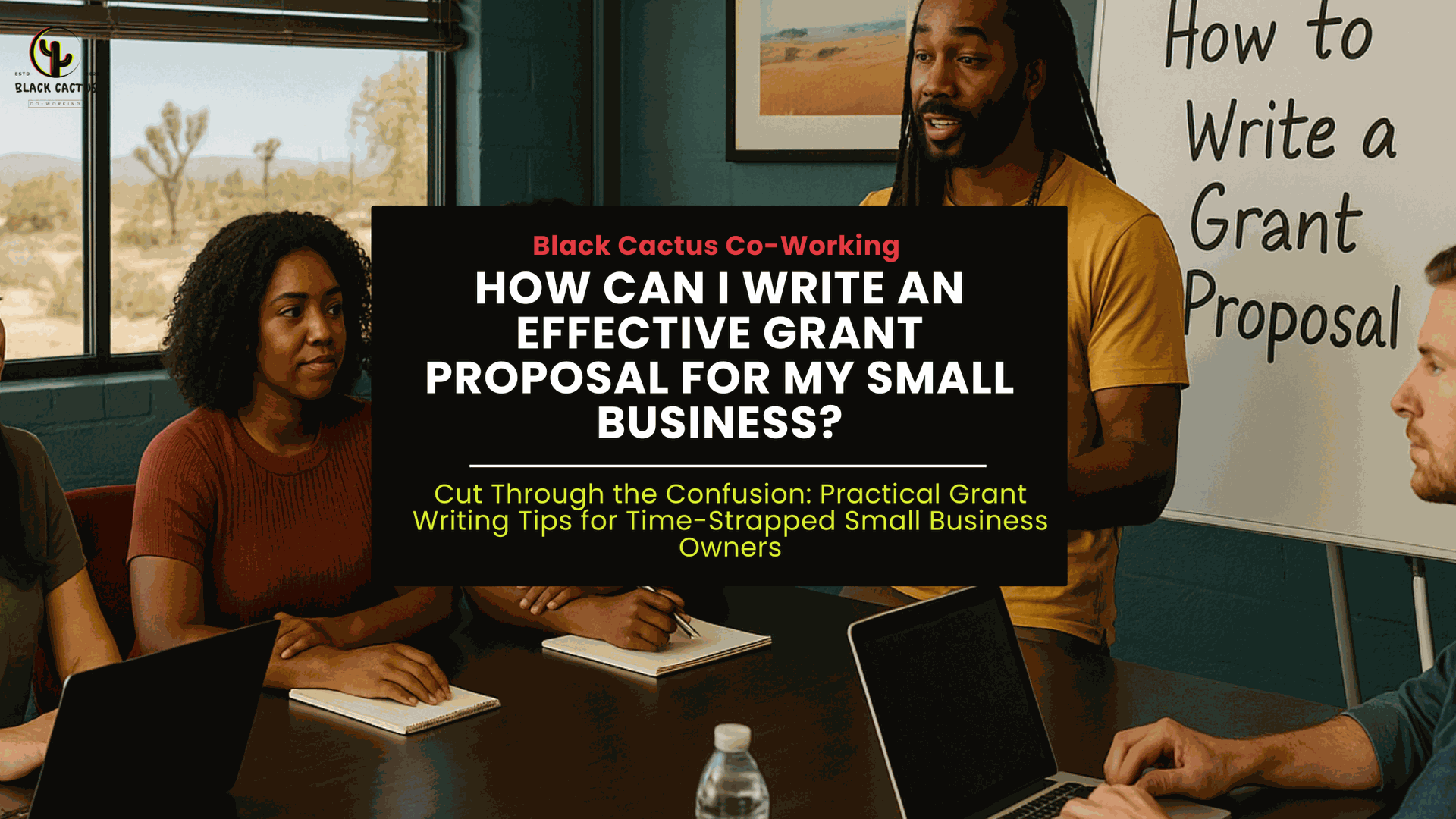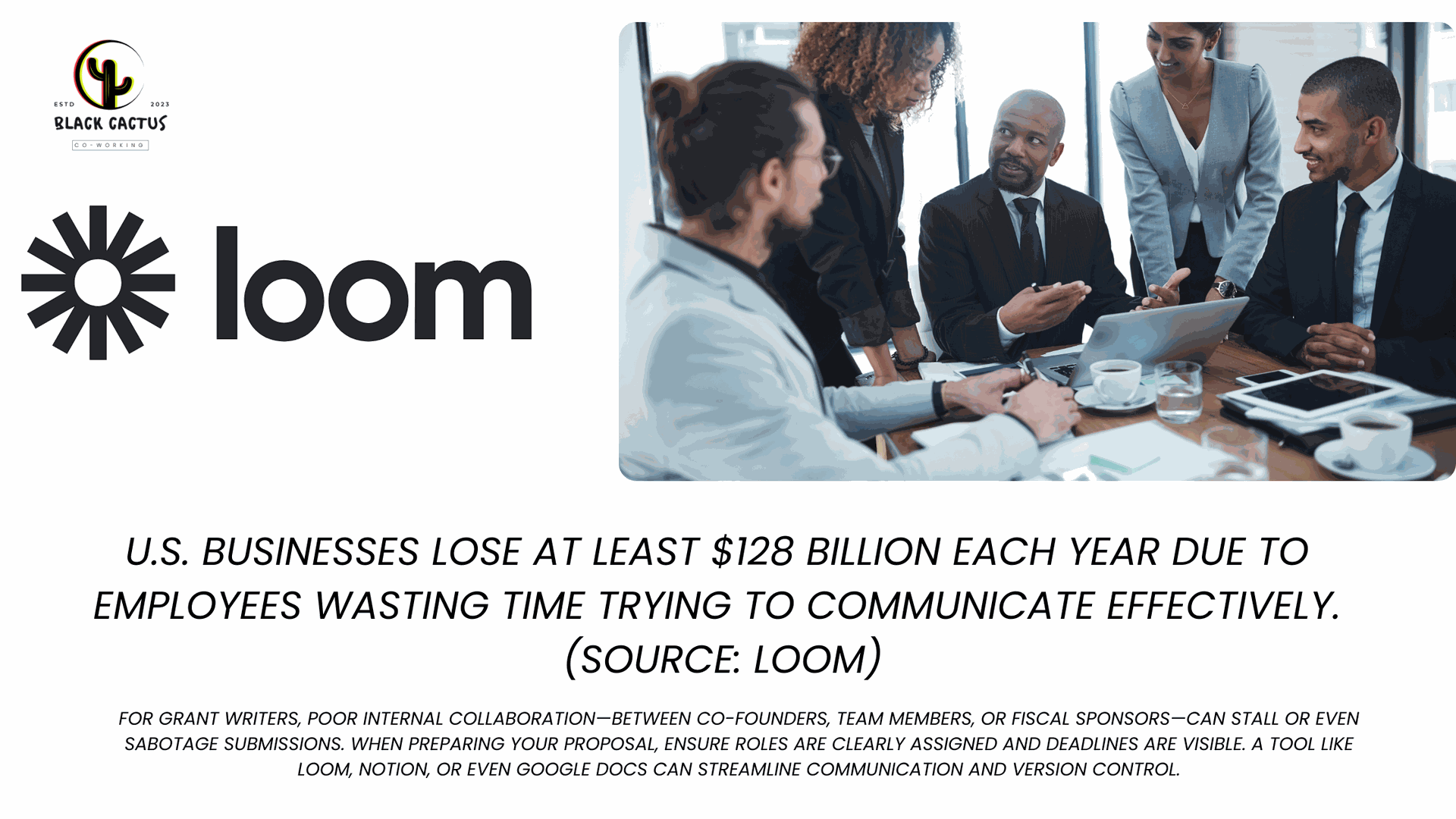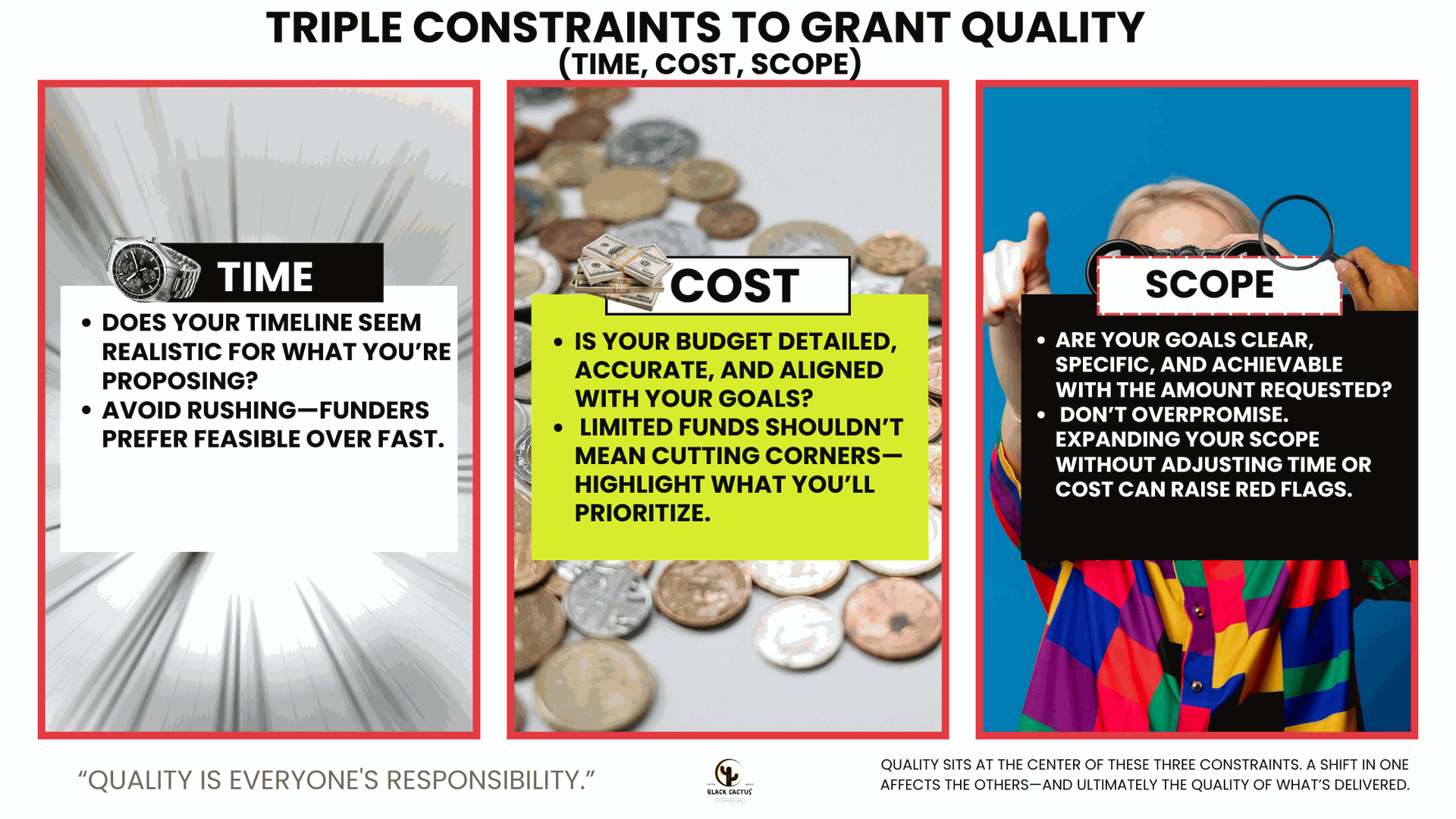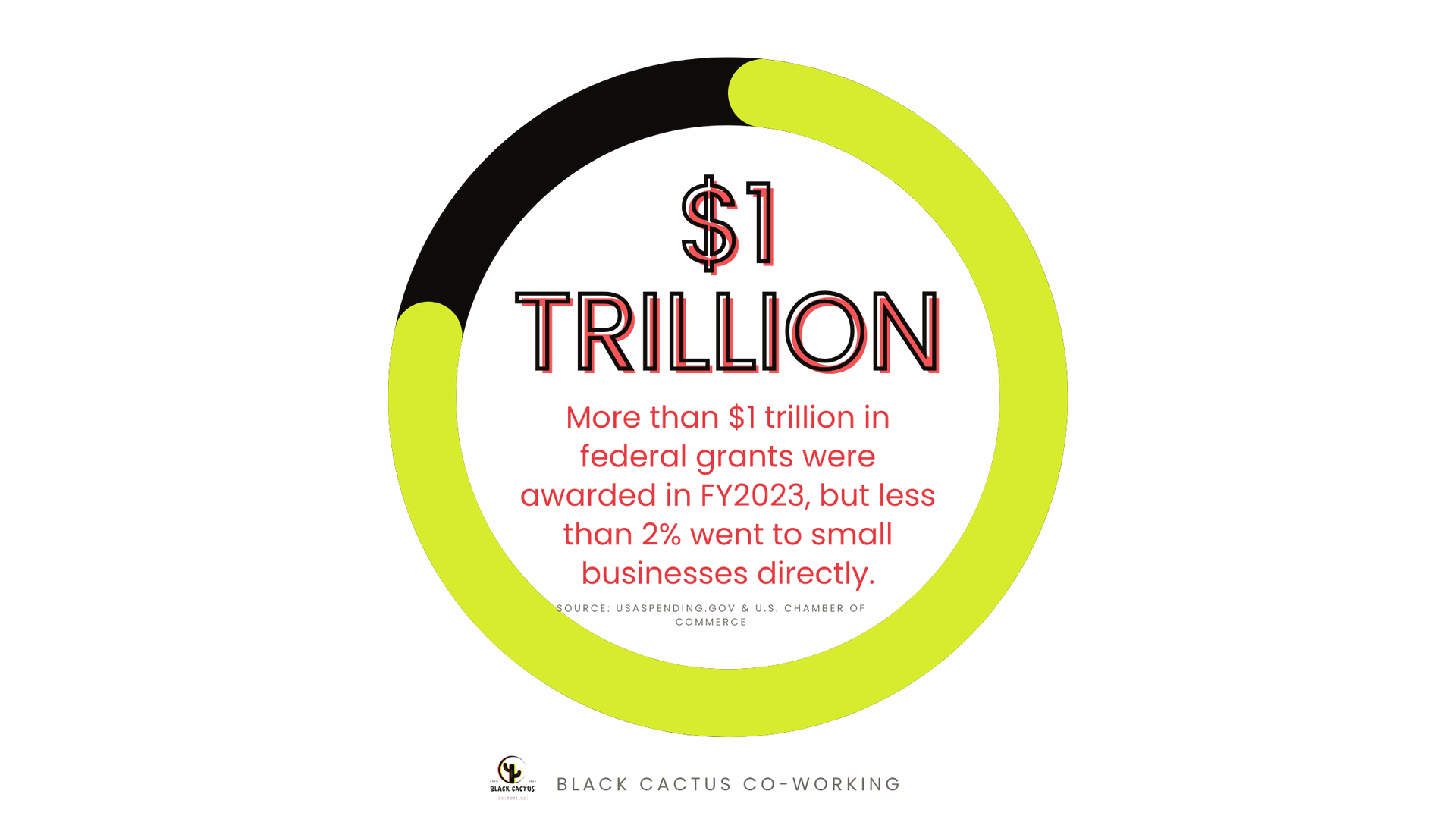If you’ve ever stared at a blank Word doc labeled “Grant Proposal,” you’re not alone. For many small business owners—especially those juggling limited time, resources, and maybe even a touch of imposter syndrome—grant writing can feel like trying to solve a puzzle with missing pieces.
But grants can be a powerful way to unlock funding for your business. Whether you're launching a new program, expanding operations, or serving a greater community need, a well-crafted grant proposal can be the difference between staying stuck and leveling up.
At Black Cactus Co-Working, we’ve helped dozens of local entrepreneurs navigate this process—and we’re sharing what works, what doesn’t, and how you can improve your odds of success.

The Pain Points of Grant Writing (And Why So Many Give Up)
Before we dive into best practices, let’s name the biggest frustrations people face when trying to write a grant proposal:
1. It’s Time-Consuming and Overwhelming
Grants often come with dozens of pages of guidelines, attachments, and eligibility requirements. It can feel like you need a second full-time job just to apply.
2. The Language Feels... Foreign
Many small business owners aren’t used to writing in the formal, impact-driven style grantmakers expect. There’s jargon, there’s structure, and there’s the dreaded question: “How do I make this sound professional?”
3. It’s Hard to Know What Funders Really Want
You might have a great business or a meaningful mission, but aligning your proposal with the specific goals of the grantor is a skill—and many applicants miss the mark.
4. Rejection Feels Personal
After putting hours into a proposal, it’s discouraging to receive a "no"—especially without feedback. It can lead to burnout and discourage future attempts.

7 Best Practices for Writing a Grant Proposal That Works
Now that we’ve vented a bit, let’s talk solutions. Here’s what we recommend at Black Cactus to make your next grant proposal more effective and less stressful.
1. Start with a Strong Foundation: Know Your Business Inside Out
Before writing a single sentence, make sure your business plan is up-to-date. This includes:
- A clear mission and vision
- Defined products or services
- Basic financials (P&L, balance sheet, projections)
- A sense of your community impact
If you're missing any of the above, work on those first—most grantors want to fund businesses that already have a roadmap.
2. Only Apply for Grants that Align with Your Goals
Not all money is good money. Read the fine print:
- What is the grant’s purpose?
- Is it for minority-owned businesses? Rural communities? Women founders? Innovation?
- Do you meet the eligibility requirements?
Focus your energy on grants that fit your business and your values.
3. Answer the Question: Why You? Why Now?
Grantors aren’t just funding projects—they’re funding people. Make it clear:
- Why your business is uniquely positioned to deliver impact
- Why now is the right time to fund you
- What makes your story compelling
This is where passion meets strategy.

4. Tell a Compelling Story With Data and Emotion
We often say, "Facts tell. Stories sell."
- Use real numbers: revenue growth, customers served, jobs created
- Include quotes, testimonials, or case studies if relevant
- Paint a picture of what success will look like
Your job is to connect the funder’s goals with your lived experience.
5. Get to the Point (And Stay There)
Grant reviewers are often reading dozens—if not hundreds—of applications. Make yours easy to skim:
- Use headings and bullets
- Avoid jargon and buzzwords
- Be clear about what you’re requesting and what you’ll do with the funds
Bonus tip: Have a friend or mentor review for clarity and flow.
6. Don’t Skip the Budget
A vague or incomplete budget is a fast-track to rejection. Your budget should:
- Clearly show how every dollar will be used
- Match the narrative in your proposal
- Include both requested and existing funding (if applicable)
Transparency builds trust.
7. Save Everything & Build a Proposal Bank
Once you’ve written one proposal, don’t start from scratch each time. Create a library of:
- Common responses (mission, vision, bios, budget templates)
- Program summaries
- Past application questions
This becomes your “proposal bank”—a huge time-saver in the future.
Final Thoughts: You Don’t Have to Do This Alone
Grant writing is part art, part strategy, and part persistence. You will get better with each proposal—and each “no” brings you closer to a “yes.”
At Black Cactus, we’re building a community of small business owners and creative professionals who support each other through the ups and downs of entrepreneurship—including writing better grant proposals.

Need help getting started? We offer:
- Grant writing workshops
- Proposal reviews
- Templates and resources
- 1:1 coaching for members
Let us help you unlock your next level.
Call to Action:
💻 Book a Grant Writing Work Session
📝 Take Our Free Grant Proposal eCourse
📍 Visit us at Black Cactus Co-Working in Twentynine Palms